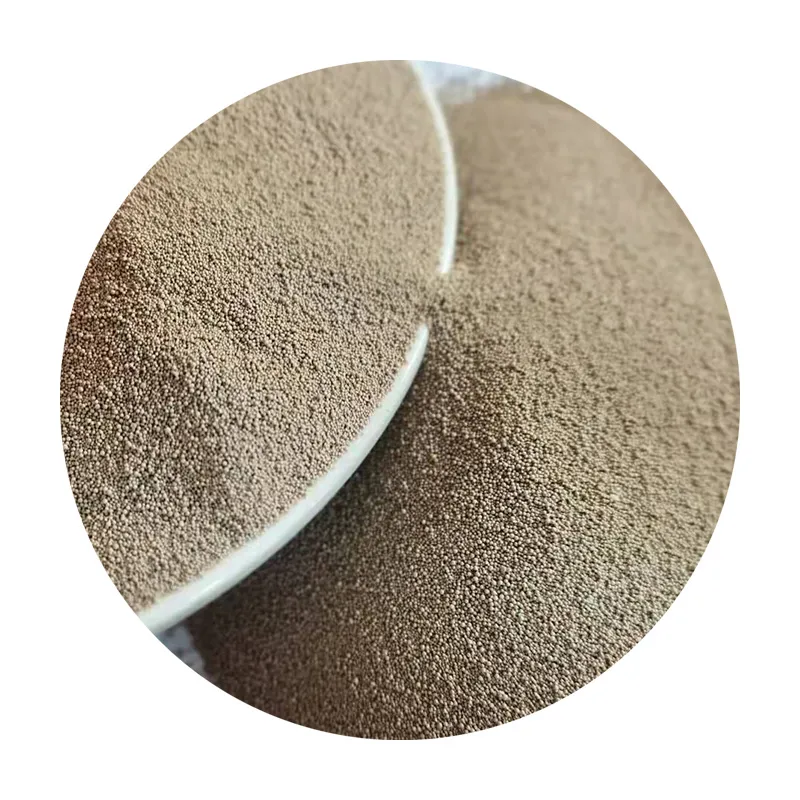Ceramic foundry sand has transformed the way high-precision castings are produced. With excellent thermal properties, mechanical strength, and recyclability, it is now a top choice across numerous casting industries. This article explores the industrial production, automotive applications, and thermal behavior of ceramic foundry sand, presenting a detailed, advertisement-style analysis for casting professionals.

How Ceramic Foundry Sand Is Manufactured for High-Performance Castings
The production of ceramic foundry sand involves a controlled process starting with high-quality bauxite as the raw material. The bauxite is calcined at high temperatures to remove impurities and enhance phase transformation. It is then melted in electric arc furnaces and sprayed into spherical particles using high-pressure air. These particles are screened and classified by size to meet specific industrial requirements.
Unlike traditional foundry sand, which often comes from natural silica or chromite sources, ceramic foundry sand is engineered for performance. Its uniform spherical shape significantly improves mold filling ability and reduces binder consumption. This optimized morphology not only increases casting accuracy but also minimizes surface defects. Top foundry sand suppliers emphasize the stability and repeatability of this production process, which makes ceramic options more reliable than natural sands.
This uniformity and engineered design allow for less sand usage per casting, reducing the environmental footprint. Because the sand does not contain crystalline silica, it also dramatically lowers health risks during handling, addressing common concerns in the foundry workplace.
Ceramic Foundry Sand for Turbocharger Casting in the Automotive Industry
One of the most impressive applications of ceramic foundry sand is in the casting of automotive turbochargers. These components demand high surface finish, dimensional accuracy, and the ability to withstand rapid temperature fluctuations—all of which are perfectly supported by the high thermal shock resistance of ceramic media.
In contrast to conventional foundry sand, ceramic-based sand provides better gas permeability, ensuring that no gas gets trapped during the casting process. This helps to eliminate shrinkage defects and porosity, which are common concerns when producing intricate and performance-critical parts like turbocharger housings.
The hardness and strength of ceramic foundry sand allow it to maintain dimensional stability even under intense casting conditions. As a result, engine manufacturers benefit from reduced rework rates, improved part consistency, and a more streamlined casting process. These advantages make ceramic media indispensable to high-end manufacturers and are a major selling point highlighted by any competitive foundry sand supplier.
The Influence of Sintering Temperature on Ceramic Foundry Sand Strength
The thermal treatment or sintering process directly impacts the mechanical strength and stability of ceramic foundry sand. As the sintering temperature increases, the sand undergoes densification, which leads to enhanced compressive strength and higher resistance to deformation.
In application, the typical sintering range for high-quality ceramic sand is between 1300°C and 1600°C. Within this range, ceramic particles develop the optimal structure that allows them to resist crushing and degradation during mold filling and metal pouring. This is especially important in castings involving molten metals such as steel or iron, where contact temperatures can easily exceed 1500°C.
Understanding the sintering process allows foundry sand suppliers to customize the product based on the casting requirements of different industries. It also influences the long-term durability of the sand, enabling it to be reused multiple times without significant loss in performance. Reusability directly correlates to a more favorable foundry sand price, making ceramic media not only superior in function but also more economical over time.
Price Trends and Market Shifts in Foundry Sand Selections
When analyzing the foundry sand price, it’s important to look beyond the initial cost per ton and instead evaluate the total cost of ownership. While ceramic foundry sand may have a higher upfront price compared to traditional sand, its durability, recyclability, and casting accuracy result in major long-term savings.
One ton of ceramic foundry sand can often be reused 20 times or more, compared to just 3–5 uses for typical silica-based sand. That means fewer material purchases, less waste generation, and lower disposal costs. Additionally, higher casting yields and fewer defects reduce labor and energy costs throughout the production cycle.
With industries focusing more on sustainability, health standards, and cost-efficiency, the global market is shifting toward engineered foundry materials. Today’s foundry sand suppliers are seeing growing demand from not just automotive companies but also from aerospace, marine, and energy sectors.
This change is pushing innovation and driving competition, which is gradually balancing the foundry sand price for ceramic variants. In emerging markets, particularly in Asia and the Middle East, demand for ceramic foundry sand is expected to grow at a double-digit rate in the next five years.
Ceramic Foundry Sand FAQs
What makes ceramic foundry sand better than traditional silica sand in casting?
Ceramic foundry sand offers superior thermal resistance, better flowability, lower binder requirements, and excellent surface finish, all of which contribute to more accurate and cost-effective casting processes.
Can ceramic foundry sand be used for high-temperature steel casting?
Yes. Its high refractoriness and strength make it ideal for casting molten steel, especially where thermal fatigue and dimensional accuracy are critical.
How many times can ceramic foundry sand be reused?
Typically, ceramic sand can be reused over 20 times without significant degradation, offering better value and lower long-term foundry sand price compared to traditional sand.
What role do foundry sand suppliers play in ensuring quality?
Top foundry sand suppliers provide consistent quality control, customization for specific casting needs, and technical support to ensure optimal performance for clients.
How does sintering temperature affect ceramic foundry sand performance?
Higher sintering temperatures improve strength, roundness, and resistance to thermal shock, which enhances the overall durability and performance of the foundry sand during casting.
Post time:Ιούν . 05, 2025 16:00Next:Casting Sand for Sale: The Core Ingredient Behind Reliable and Precise Metal Castings
